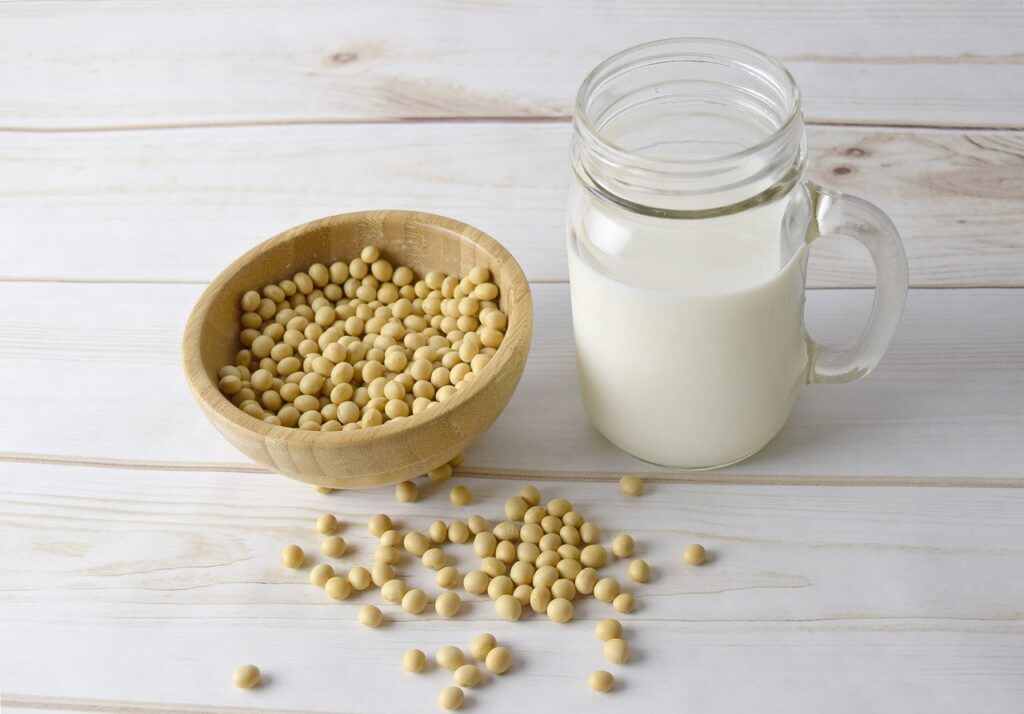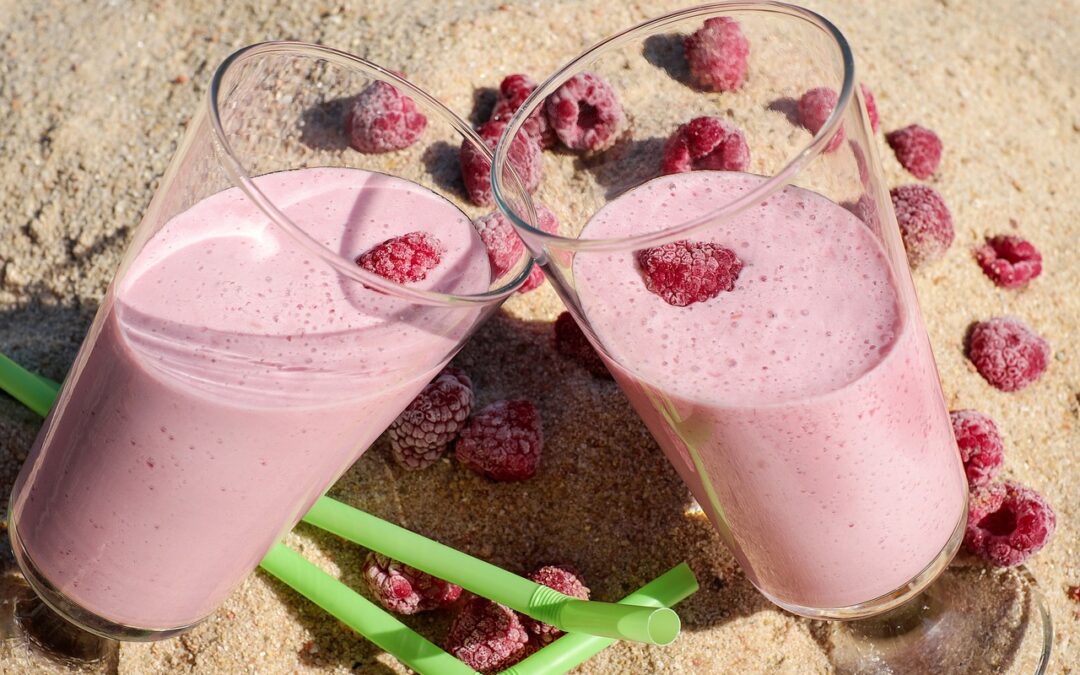Protein shakes have become a staple in the diets of many health-conscious individuals.
They’re often seen as a quick and convenient way to boost protein intake. But what’s the science behind these popular dietary supplements? How do they contribute to our health and fitness goals? Understanding the benefits, the different types available, and how they work in our bodies enables us to make informed, effective, and efficient choices tailored to our unique health objectives.
Whether you’re a fitness enthusiast, a busy professional, or someone looking to supplement their diet, this guide will provide valuable insights. Learn the science behind protein shakes and their role in a balanced diet.
JUMP TO…
Understanding Protein Shakes and Their Benefits
The Role of Protein in Muscle Recovery
Daily Protein Intake and Protein Shakes
Types of Protein in Shakes
Complete vs. Incomplete Proteins
Essential Amino Acids in Protein Shakes
Gold Standard Protein Powder and Non-Dairy Alternatives
Benefits of Non-Dairy Protein Shakes
How to Choose the Right Protein Shake
Incorporating Protein Shakes into Your Diet
Timing and Frequency of Consumption
Understanding Protein Shakes and Their Benefits
Protein shakes are dietary supplements designed to provide a high dose of protein. They’re typically consumed in liquid form, making them easy to digest and absorb.
The primary purpose of protein shakes is to supplement daily protein intake. They’re especially popular among athletes and fitness enthusiasts for their role in muscle recovery and growth.
But the benefits of protein shakes extend beyond the gym. They can also aid in weight management by promoting feelings of fullness. This can help curb overeating and unhealthy snacking.
Here are some key benefits of protein shakes:
- Muscle growth and maintenance
- Enhanced recovery after exercise
- Weight management and satiety
- Convenience and ease of use
- Supplementing protein intake for those with dietary restrictions
The Role of Protein in Muscle Recovery
Protein plays a crucial role in muscle recovery. After a workout, our muscles undergo microscopic damage. This is where protein comes in.

Protein provides the building blocks, known as amino acids, that repair and rebuild these damaged muscle fibers. This process is what leads to muscle growth and strength gains.
Daily Protein Intake and Protein Shakes
The recommended daily allowance (RDA) for protein varies based on age, sex, and activity level. For most adults, it’s around 46-56 grams per day.
Protein shakes can help meet these daily requirements, especially for those with higher protein needs. They’re a convenient option for those who struggle to get enough protein through food alone.
Types of Protein in Shakes
Protein shakes can be made from a variety of protein sources. The type of protein used can impact the shake’s nutritional profile, taste, and texture.
Animal-based proteins, like whey and casein, are common in many shakes. They’re known for their high biological value, meaning they contain all essential amino acids.
Plant-based proteins, such as soy, pea, and rice, are also used. These are popular choices for vegans, vegetarians, and those with dairy allergies or lactose intolerance.
Here are some common protein sources used in shakes:
- Whey protein
- Casein protein
- Soy protein
- Pea protein
- Rice protein
Complete vs. Incomplete Proteins
Proteins are classified as complete or incomplete based on their amino acid profile. Complete proteins contain all nine essential amino acids, while incomplete proteins lack one or more. Most animal-based proteins are complete. Plant-based proteins, except for soy and quinoa, are usually incomplete.
Essential Amino Acids in Protein Shakes
Essential amino acids are those that our bodies can’t produce on their own. We must get them from our diet. Protein shakes, especially those made with complete proteins, provide a convenient source of these essential amino acids.
Gold Standard Protein Powder and Non-Dairy Alternatives
Gold Standard protein powder is a popular choice among fitness enthusiasts. They are known for their high protein content and low sugar levels.
These shakes often contain whey protein, a complete protein derived from milk. Whey is quickly absorbed by the body, making it ideal for post-workout recovery.
However, not everyone can consume dairy-based protein shakes. For those with lactose intolerance or dietary restrictions, non-dairy alternatives are available.
Non-dairy protein shakes can be made from:
- Soy protein
- Pea protein
- Rice protein
- Hemp protein
Benefits of Non-Dairy Protein Shakes
Non-dairy protein shakes offer several benefits. They are suitable for vegans, vegetarians, and those with lactose intolerance or milk allergies. These shakes also tend to be lower in saturated fats and cholesterol. This makes them a heart-healthy choice for those watching their cholesterol levels.
How to Choose the Right Protein Shake
Choosing the right protein shake depends on your individual needs and goals. Are you looking to build muscle, lose weight, or simply supplement your protein intake?
Consider the protein source. Whey and casein are complete proteins, while plant-based options may need to be combined for a full amino acid profile.
Also, consider the following:
- Calorie count
- Protein amount
- Sugar content
- Fat content
- Carbohydrate content
- Added vitamins and minerals
- Presence of allergens
- Taste and texture
If you have a particular goal in mind, these factors above should be considered when choosing a protein shake.
For example…
If your goal is to build muscle you’d want to consider a protein shake option possibly with higher calorie count, higher carbohydrates, and protein anywhere from 20-30~ grams per serving. The higher carbohydrates would be necessary to support energy expenditure during workouts [weight lifting specifically] allowing your body to push harder/lift heavier which causes micro-tears in the muscle. From here the body begins to repair & strenghten the muscle by sending nutrients [like protein] to the damaged area and this process is what helps with muscle growth – when supported by proper nutrition.
OR…
If your goal is to lose weight, you may want to consider a lower calorie protein shake with lower carbohydrates, & lower fat while still offering 20-30~ grams protein per serving. Choosing a protein shake with this type of nutritional profile, would allow you to incorporate more protein into your diet each day, while staying in a calorie deficit & supporting muscle upkeep & metabolism via the adequate protein levels.
Additionally…
You may want to consider protein powder or protein shake options that include supportive nutrients like collagen, probiotics, prebiotics, or super greens like LeanMost Whey Protein.
Reading Labels and Understanding Ingredients
Reading labels is crucial when choosing a protein shake. Look for a short ingredient list with recognizable items. Avoid shakes with excessive sugar, artificial sweeteners, or unnecessary additives.
Incorporating Protein Shakes into Your Diet
Protein shakes can be a convenient way to boost your protein intake. They can be used as a meal replacement, a snack, or a post-workout recovery drink.
However, they should not replace whole foods entirely. A balanced diet with a variety of protein sources is essential for overall health.
Here are some ways to incorporate protein shakes into your diet:
- As a quick breakfast on-the-go
- As a post-workout recovery drink
- As a filling snack between meals
- As a protein boost in homemade smoothies
Timing and Frequency of Consumption
The timing of protein shake consumption can impact its effectiveness. For muscle recovery, it’s often recommended to consume a protein shake within 30 minutes after a workout. However, the most important factor is meeting your overall daily protein needs.
Conclusion: Balancing Protein Shakes with a Healthy Lifestyle
In conclusion, protein shakes can be a beneficial addition to a balanced diet and active lifestyle. They offer convenience, versatility, and a high-quality protein source. However, they should complement, not replace, a diet rich in whole foods. Always consult a healthcare professional before starting any supplement regimen.

